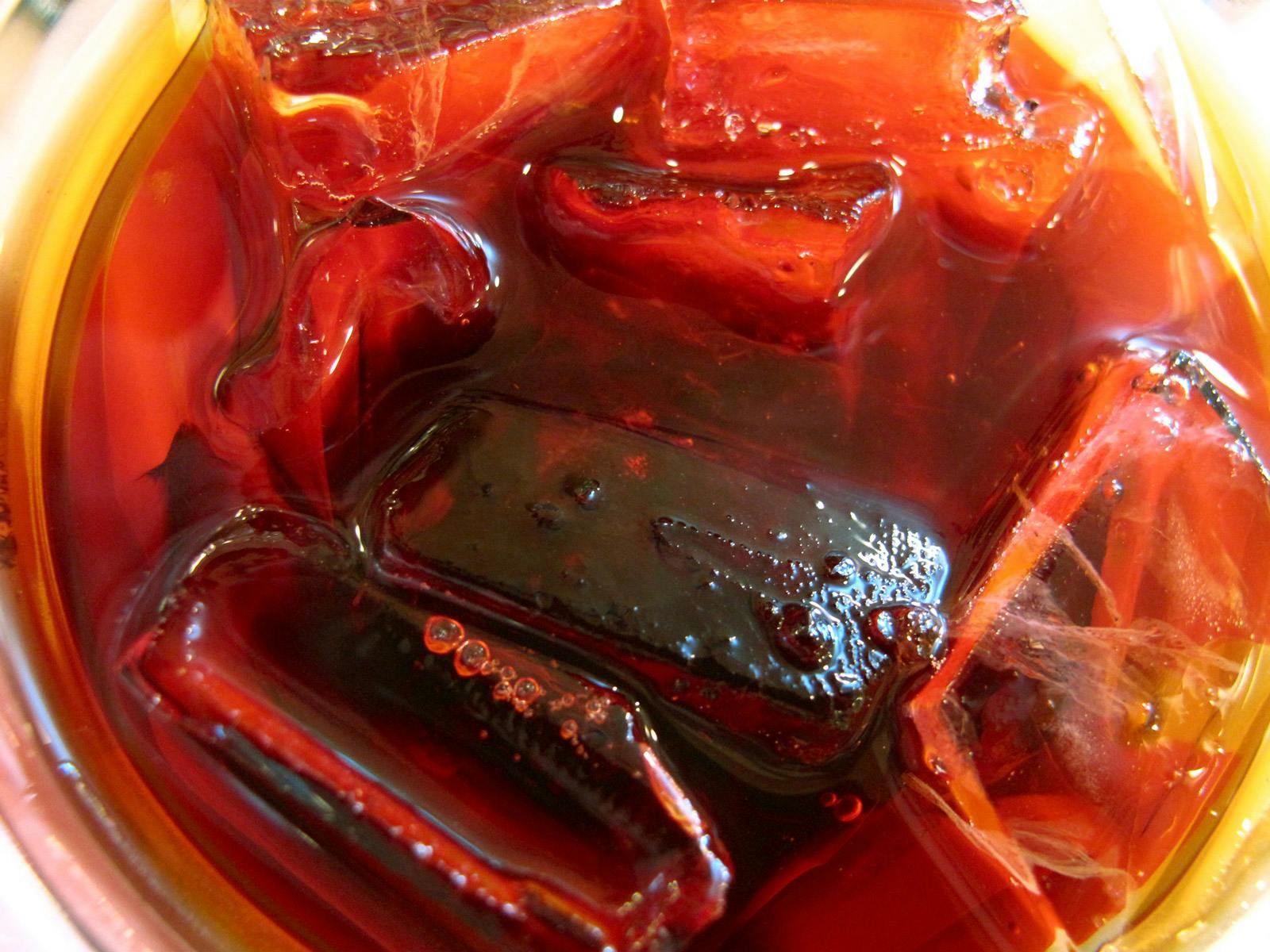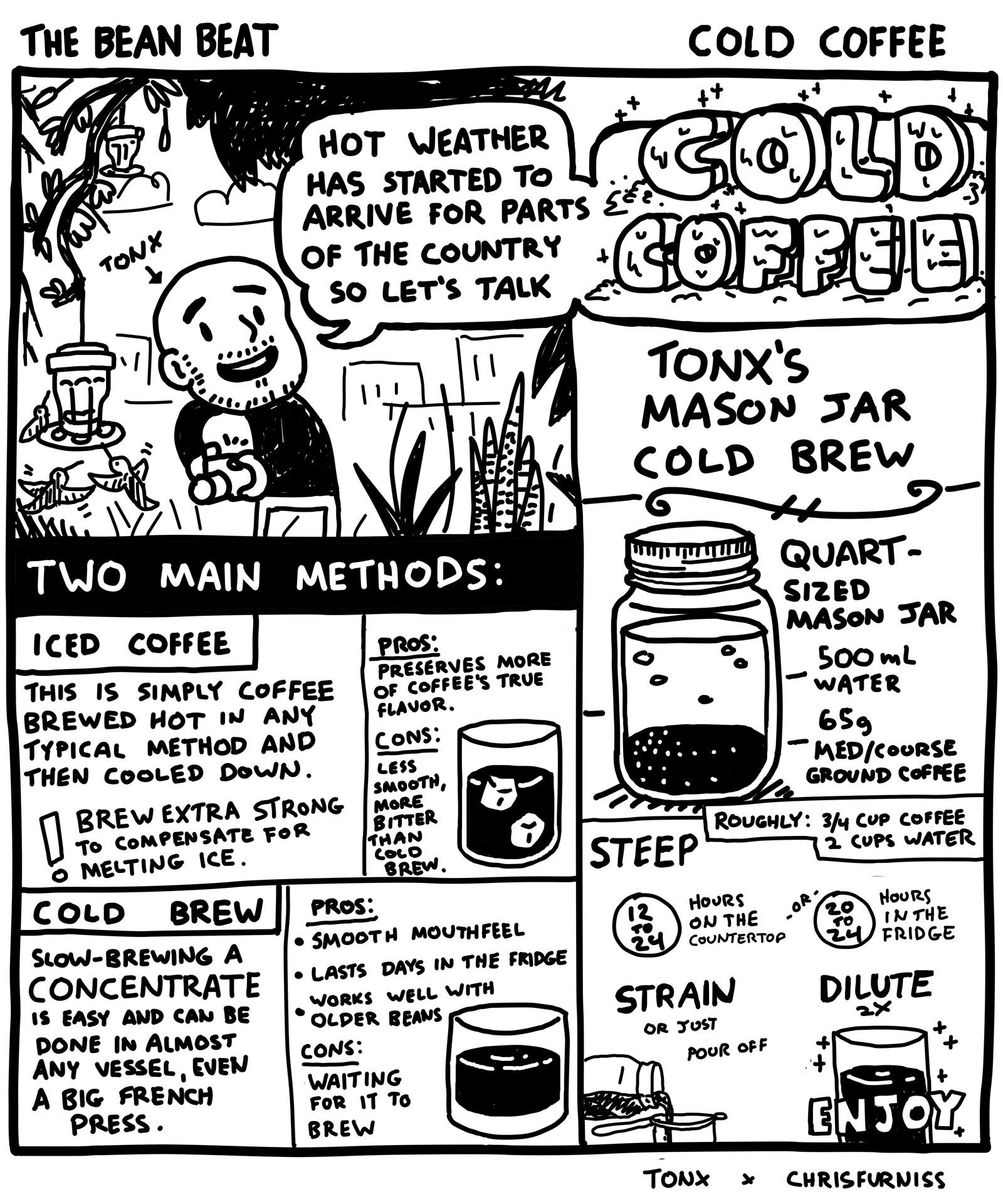SHARE
How to Make Your Own Cold Brew Coffee

Making delicious cold brew coffee concetrate at home is simple. Follow our tips and recipe and see for yourself!
|
Coffee Blog
The proliferation of pricey canned and bottled cold brew products and a couple years of trend pieces about the rise of cold brew coffee might lead you to believe there’s something magical about making this beverage. But brewing your own cold brew couldn’t be easier.
Cold brew coffee is simply ground coffee + water (not hot) + time. No need to pay upwards of for a branded can made with mediocre beans when you can make it much better in your own kitchen.
There are some good products that make brewing and filtering a cinch, but almost any vessel will work in a pinch. Cold brew is very forgiving as long as you’re patient and make a strong enough concentrate.
1 – GROUND COFFEE
One of the things that makes cold brew so popular at coffee bars is that it’s extremely forgiving of beans that’re no longer super fresh. It’s the one weird trick that might account for most of the cold brew craze at cafes. If you have beans that are many weeks past their prime, they can still yield very pleasant cold brew.
Grind a bit coarser than you would for filter coffee, the goal is to keep dust and fines to minimum.
2 – COFFEE-TO-WATER RATIO
Simply, you want to end up with a concentrate that is about double the strength of a normal brew. The concentrate will keep nicely many days in your fridge and you can dilute to taste (with water, ice, your favorite milky stuff, whatever).
A 1:7 ratio is a good place to start — 1 gram of coffee for every 7ml of water — or about 140g coffee per liter of water.
Or (sans scales or the metric system) about 1.25 cups of ground coffee to 32oz water or roughly 5 Tbsp coffee per 8oz of water.
When in doubt, err on the side of more ground coffee!
You want to use cold, filtered water – the same water you’d use for making your morning cup (minus the heat).
3 – BREWING AND BREW TIME
Whether you’re using a big mason jar, a toddy brewer, or some other vessel, combine water and grounds, and make a note of your start time and set a reminder for when you want to decant (it’s easy to forget!).
14-18 hours is reasonable if you’re brewing on a countertop – 18-24 hours if you’re brewing it in the fridge.
4 – FILTERING / DECANTING / DILUTING
Off-the-shelf cold brew contraptions have really nice filter/drip systems, but you’ll find it’s not hard to separate your concentrate from the coffee grounds with tools already stashed in your kitchen. Slowly pouring off the concentrate from the spent grounds which will sink to the bottom works well enough. A kitchen sieve or French press can be helpful here. The sediment that remains in your concentrate will settle to the bottom with a bit of time. If you’re impatient, filtering with cheesecloth or a clean old t-shirt will remove some sediment. Paper filters will prove to be too slow and close to useless here.
Dilute per use to taste, leaving the remaining concentrate in the fridge. You’re likely going to dilute 1:1, but may find you like drinking it stronger or playing around with different milk or cream options. Have fun with it!

A COLD BREW FAQ
Does cold brew have more caffeine?
Probably yes. A longer contact time and heavier overall brew strength give it more punch — plus you tend to drink it up quicker and in more volume than the slow tentative sips of a hot morning mug. Be careful! You can also make really tasty decaf cold brew as long as you start with great decaf beans.
Is cold brew lower in acid? Is it smoother?
“Low acid” coffee is one of those weird marketing tropes that wont go away. Cold brew isn’t necessarily lower in acid — there’s little difference in pH between the same coffee brewed hot and fast versus slow and cold. But the balance of organic acids is different (cold brew has less antioxidant properties) and cold brew tends to be have dramatically less bitterness and a smoother mouthfeel. This may owe to cold brew extracting more of the long-chain, higher molecular weight compounds that contribute body and sweetness.
Is there a better way of making cold coffee?
Many coffee nerds (ourselves included) prefer to chill strong hot-brewed coffee as it shows off a bit more of the coffee’s intrinsic flavor and retains some of the pleasing bitterness that makes a cup feel balanced. We’ve used flash chillers with much success but brewing extra strong over ice works nicely too.
The knock against cold brew among some of our coffee industry colleagues is that cold brew loses much of the origin character of the coffee and tastes sort of like flat cola. Strong opinions abound! Experiment and find what works best for you.
SHARE
